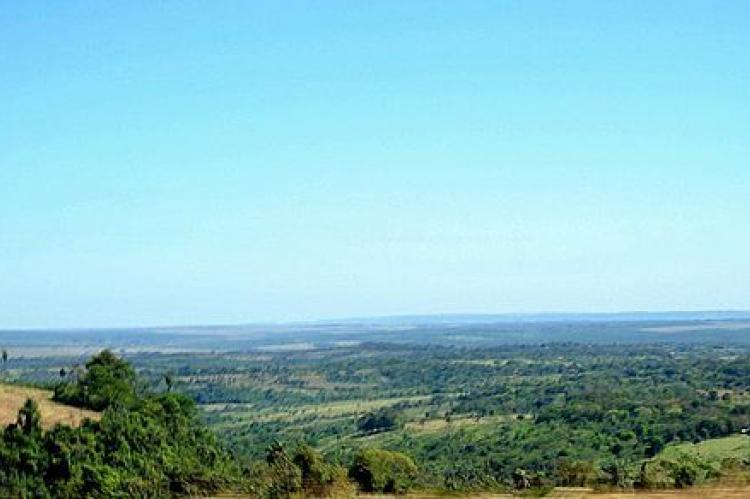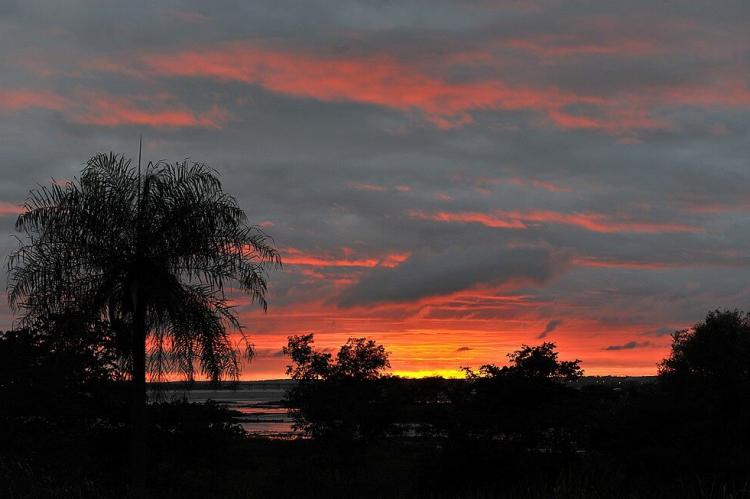Mbaracayú Forest Natural Reserve: Bosque Mbaracayú Biosphere Reserve (Paraguay)
The Mbaracayú Forest Natural Reserve and the Bosque Mbaracayú Biosphere Reserve protect a hotspot of biodiversity in the Atlantic Forest of eastern Paraguay. It is a tropical humid forest ecosystem, which includes low and medium-altitude Atlantic semi-deciduous forests and savannas.
Mbaracayú Forest Natural Reserve
The Mbaracayú Forest Natural Reserve is located in the upper Jejuí River basin in the eastern region of Paraguay, near the Brazilian border. It is situated within the Mbaracayú Mountain Range, which runs northeast to southeast, crossing the northeastern corner of the reserve. The natural reserve is one of the largest protected areas in Paraguay, containing the Atlantic Forest.
Established in 1989 in response to the rapid loss of the Upper Parana Atlantic Forest ecoregion, the Mbaracayú Forest Natural Reserve serves as a pristine core within the broader Bosque Mbaracayú Biosphere Reserve. Spanning an area of 64,405 hectares (159,148 acres), this reserve encompasses a breathtaking mosaic of ecosystems, from the lush embrace of the Atlantic rainforest to the rugged expanse of dry forest and the verdant plains of Chaco savannah.
A mesmerizing array of flora and fauna thrives within this sanctuary. Majestic jaguars and elusive pumas patrol the forest floor while tapirs, anteaters, and capybaras roam amidst the verdant undergrowth. The skies above echo with the symphony of hundreds of bird species, their vibrant plumage a testament to the reserve's rich biodiversity.
The reserve's significance extends beyond its ecological treasures. It is a cornerstone of sustainable development, demonstrating how conservation and economic progress coexist harmoniously. Guided by ecotourism and sustainable forestry principles, local communities have found ways to thrive alongside the reserve, their livelihoods intertwined with its preservation.
Bosque Mbaracayú Biosphere Reserve
The Bosque Mbaracayú Biosphere Reserve encompasses a larger area than the Mbaracayú Forest Natural Reserve and surrounds it. It corresponds to a biodiversity hotspot in the continental part of the Mata Atlántica's biologic corridor.
The Biosphere Reserve is home to a complex ethnic and cultural mosaic, with a population of around 30,000 people, including Paraguayan and Brazilian peasants, indigenous communities, and urban populations.
Encompassing an area of over 300,000 hectares (740,000 acres), the biosphere reserve extends its protective embrace beyond the Mbaracayú Forest Natural Reserve. This vast biosphere reserve, designated by UNESCO in 2000, encompasses a broader range of ecosystems, including the Mbaracayú Forest Natural Reserve, buffer zones, and transition zones.
The core area's buffer zones act as a protective ring around the reserve's ecological heart. These zones allow for sustainable human activities like traditional agriculture and controlled forestry while maintaining a buffer against external threats.
The transition zones, fringing the buffer zones, bridge the protected areas and the surrounding landscape. These zones encourage sustainable land-use practices, fostering a harmonious relationship between human activities and the natural environment.
A Symbiotic Relationship
Though distinct in their scope, the Mbaracayú Forest Natural Reserve and the Bosque Mbaracayú Biosphere Reserve are inextricably linked. The reserve serves as the core area, the heart of the biosphere reserve, safeguarding the pristine ecosystems and the rich biodiversity they harbor.
In turn, the biosphere reserve provides a broader protective framework, encompassing the reserve and ensuring its long-term sustainability. Together, these two protected areas form a model of conservation, demonstrating how ecological preservation and sustainable development can coexist harmoniously.



